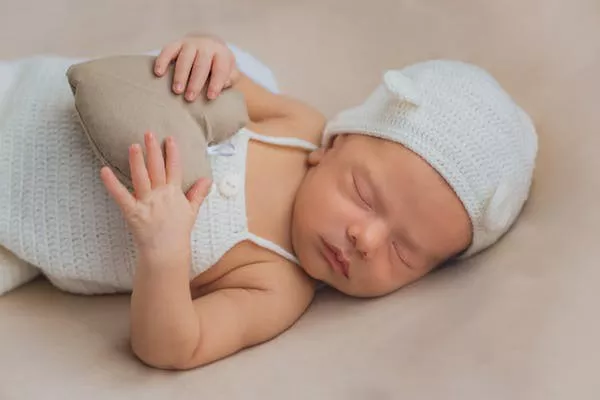As a new parent, ensuring your baby’s safety and well-being is of paramount importance. One crucial aspect of infant care is establishing a safe and comfortable sleeping environment. Creating a conducive space for your little one to rest not only promotes healthy sleep patterns but also reduces the risk of Sudden Infant Death Syndrome (SIDS) and other sleep-related incidents. In this article, we will explore the best practices for infant sleep, offering guidance on sleep position, bedding, room conditions, and establishing a consistent sleep routine.
Safe Sleep Position:
The American Academy of Pediatrics (AAP) recommends placing infants on their backs to sleep until the age of one. This sleeping position has been proven to significantly reduce the risk of SIDS. By placing your baby on their back, you allow for unobstructed breathing and decrease the likelihood of suffocation or overheating. Remember to always lay your baby on a firm and flat sleep surface, such as a crib or bassinet, to maintain a safe sleeping environment.
Choosing the Right Bedding:
To create a safe sleeping space, it is essential to consider the bedding and accessories used in the crib or bassinet. Opt for a firm mattress that fits snugly into the crib without any gaps. Avoid using pillows, blankets, crib bumpers, or stuffed animals in the sleep area, as they pose suffocation hazards. Instead, dress your baby in a one-piece sleeper or sleep sack to keep them warm without the need for loose bedding.
Room Temperature and Ventilation:
Maintaining an appropriate room temperature is vital for your baby’s comfort and safety during sleep. The ideal room temperature for infants is between 68-72°F (20-22°C). Use a room thermometer to monitor the temperature and ensure that your baby does not overheat. Additionally, proper ventilation is crucial to maintain fresh air circulation. Avoid excessive use of blankets or clothing that may cause your baby to become overheated.
Creating a Calm Sleep Environment:
Establishing a calming sleep environment is key to helping your infant settle into restful sleep. Dim the lights in the room and use soft, soothing sounds, such as white noise machines or gentle lullabies, to create a tranquil atmosphere. Consider using blackout curtains or blinds to block out excessive light during daytime naps. Consistency in the sleep environment will help your baby associate certain cues with sleep, aiding in the development of healthy sleep patterns.
Safe Co-Sleeping Guidelines:
While the AAP recommends room-sharing without bed-sharing for the first six to twelve months, some families choose to co-sleep. If you decide to co-sleep, it is crucial to follow specific safety guidelines. Ensure that the sleep surface is firm, and use a co-sleeper bassinet or a sidecar arrangement to create a separate sleeping space for your baby within the adult bed. Avoid using thick blankets, pillows, or soft bedding that can pose suffocation risks.
Establishing a Consistent Sleep Routine:
Babies thrive on routine, and establishing a consistent sleep routine can promote healthy sleep patterns. Set a regular bedtime and naptime schedule to help regulate your baby’s internal clock. Incorporate relaxing activities before sleep, such as a warm bath, gentle massage, or soothing lullabies. Consistency and predictability in the sleep routine will signal to your baby that it is time to wind down and prepare for sleep.
Conclusion:
Creating a safe and comfortable sleep environment for your infant is vital for their well-being and development. By following the recommended guidelines, including placing your baby on their back to sleep, using appropriate bedding, maintaining optimal room conditions, and establishing a consistent sleep routine, you can promote healthy sleep habits and reduce the risk of sleep-related incidents. Remember, each baby is unique, and it is important to be attentive to their individual needs and consult with a pediatrician for personalized advice. With a safe and nurturing sleep environment, your baby can enjoy restful nights and wake up refreshed and ready for new adventures.


